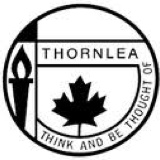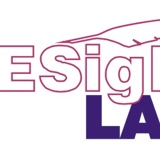Information
-
Document No.
-
Audit Title
-
Client / Site
-
Conducted on
-
Prepared by
-
Location
-
Personnel
Design Project Ideation
-
Understanding of the design scenario describing exactly what is expected of the product/project. (T)
-
Can orally describe what is expected of the product/project as outlined in the design scenario. (C)
-
Provides a clearly written explanation of what is expected of the product/project as outlined in the design scenario. (C) Note: This statement will be used later in the Design Report.
-
Team creation
-
Joins peers in forming a team of appropriate size
-
Team discusses the design scenario and discusses possible roles based on individual strengths.
-
Research
-
Broadly researches those areas/concepts that the student/team is unfamiliar with. (KT) Selects a variety of sources and not just one e.g. YouTube
-
Concept:
-
Concept:
-
Concept:
-
Concept:
-
Significant properties that affect further design choices:
-
Adhesives
-
Fasteners
-
Materials
-
Other
-
Other
-
Records the location from which the research was taken. (C) Will used in the References section of the Design Report.
-
Can orally describe the concepts learned from the research. (C)
-
Review concepts to further understanding.
-
Can orally describe the concepts learned from the research. (C)
-
Brainstorming
-
Team brainstorms possible solutions (T)
-
Possible solutions are recorded as notes, sketches, website images, etc. (C) If necessary, use the camera in your iPod/cell phone to take images/videos.
-
Possible solutions are based on sound research and not pure assumption or guesswork. T/A
-
Can orally describe the pros and cons of the proposed solution. (C)
Planning
-
Planning methods
-
Understands the need for proper planning. (T)
-
Can orally describe the planning methods and what purpose they serve. (C)
-
Planning materials used (T/C)
-
Sketches
-
Orthographic drawings
-
Sketch Up
-
Bill of Materials
-
Cutting List
-
Order of operations list Step by step list of the sequence to be followed in the construction of the project.
Prototyping and modelling
-
Creates prototype using suitable inexpensive materials (A)
-
Compares prototype to expectations and analyzes the results. (T)
-
Constructs more prototypes as necessary and evaluates after each one. (A/T)
Construction
-
Refers to order of operations before cutting any material. (T)
-
Measurement and layout
-
Checks Bill of Materials for correct measurements and number of pieces
-
Measures twice before cutting to avoid material wastage. (A)
-
Chooses the best machine for the task at hand. (T)
-
Machining
-
Safely sets up appropriate machine in preparation of operation to be performed. (T)
-
Performs machining operation ensuring safety of self, peers and teacher. (A)
-
Checks measurements of new piece against Bill of Materials and other prepared pieces. (T)
-
Repeats the above steps until all pieces have been machined. (A)
-
Assembly
-
Prepares a 'dry' assembly of the product using no adhesives or fasteners checking for proper fit and alignment of pieces. (A)
-
If the dry assembly proves successful then the true assembly can begin. (A)
-
If the dry assembly proves unsuccessful then adjust/remake pieces as necessary.. (A)
Testing
-
Test finished piece against intended purpose. (A)
-
Does the finished piece meet or fulfill the requirements as outlined in the design scenario? (T)
-
Congratulations on getting it right the first time.
-
Review the design scenario and analyze the finished piece to determine what changes need to be made. (T)
-
Deficiencies found (C)
-
How will you decide what or how to change your design? The current state of your design is a baseline against which comparisons can be made.
-
Make one change at a time and note the effect.
-
What was the change you made? What effect did it have? Did it make it better or worse? There is no magic 'undo' button so keep changes small and be sure to note the effects of each change. (T)
Change
-
Describe the change and effect. Be sure to note whether it was positive or negative. (C)
-
Has the change solved the problem? (T)
-
How did it solve the problem? (T)
-
Repeat the testing phase making one change at a time and noting the effect each change has. (A/T)
-
Continue this process until your design satisfies the design scenario.
Writing the Design Report
-
If you spent the time doing the project management side of things during the presentation of the design scenario then most of the report will be writing a couple of short paragraphs and copying and pasting text from earlier notes.
-
The Design Report provides a written description of the design scenario, your objectives and the results of your work. Design Reports vary according to the type of industry that it is being written for. A detailed checklist of the components we will use follows.
-
Title page Includes: Project Title, Course Name, School Name, Student Name or Design Group Participant Names, Teacher's Name, Sponsors, and Date.
-
Abstract Includes: The objectives, a clear, concise and realistic description of what the product described in this report is intended to accomplish. you must also summarize and state your accomplishments. In other words, how did your design fare?
-
Introduction Includes: A concise background of the project, the design requirements and expectations, the project boundaries or limits and your project objectives.
-
Planning Includes: Critical path, tasks, deliverables, and schedule. Specifically demonstrates project management tools and methods used.
-
Design Includes: Covers all areas. a. Design specifications development (what is the product supposed to do) b. Competitive benchmarks (what others have already made) c. Design concept development (growing your ideas) d. Concepts evaluation (have you met all the requirements) e. Product design (the design process) f. Product evaluation (did it work)
-
Impact Statement Includes: A thoughtful description of the potential impact of the designed product to the environment and society as a whole. Comment on any potential safety-related issues in the use of the product. Explicit statements to each need to be made here, even if there are no environmental, societal or safety concerns. For example, does the product consume a lot of materials? Are they in limited supply? Is it hazardous to manufacture? Is it a safety hazard to children or adults? Would society benefit?
-
Conclusions Includes: Logical and thoughtful description that uses evidence (data) to claim major accomplishments. It demonstrates that the final product satisfies the engineering specifications.
-
Recommendations Includes: Sound, logical recommendations based on the design work. For example, should the design be pursued or abandoned? Why? If further small changes would make the design better, what are they? How would they make the design better?
-
References Includes: A complete list of literature, urls, contacts, etc. used in completing the design (all should be referenced in the text).
-
Appendices Includes: All design process materials such as detail drawings, assembly drawings, and product development files. It may also contain photos and videos that you took during construction and testing as well as data results (I.e. charts).
Review and submit
-
Unbelievably, you've now completed the whole process. You should review your report and if you have completed all sections then it is ready for submission.
-
Congratulate yourselves on a job well done....and get ready for the next project!











